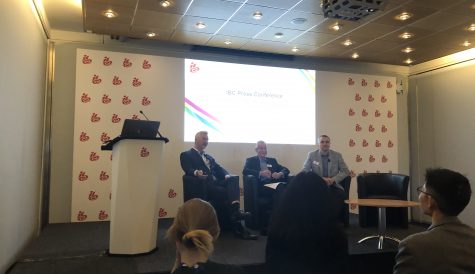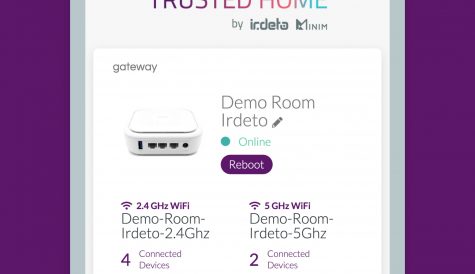
After more than 40 years of operation, DTVE is closing its doors and our website will no longer be updated daily. Thank you for all of your support.
Multiscreen rights and wrongs
 Multiscreen distribution was the dominant theme of last month’s IBC in Amsterdam, writes Stuart Thomson.
Multiscreen distribution was the dominant theme of last month’s IBC in Amsterdam, writes Stuart Thomson.
Multiscreen distribution has been on the minds of TV industry technologists for quite a while now, with interest supercharged by the iPad and its imitators.
The success of the iPad – a surprise to many who were skeptical that Apple could repeat the trick it pulled with the iPod and iPhone a third time – means that consumers rather than producers are driving that interest. And discounting for hype, it is evident that the proliferation of tablets and smartphones is underpinning innovation and investment in TV technologies including multi-format transcoding and adaptive bit-rate (ABR) streaming. In some respects, the wave of interest is reminiscent of that when the deployment of IPTV and HDTV underpinned innovations such as H.264 – and the investment in headend and consumer premises equipment that accompanied it – over the past decade.
These technologies will also have a significant impact on existing distribution networks – with the use of ABR streaming giving service providers much greater flexibility in terms of reach, enabling them to deliver services over unmanaged networks to connected TV platforms, for example.
No wonder then that ABR-enabled multiscreen video was everywhere at last month’s IBC, with the iPad (whether as second viewing screen or ‘companion device’ to book recordings and control the TV entertainment experience) replacing the 3D demo as this year’s must-have for exhibitors.
The tone was set when Virgin Media chief operating officer Andrew Barron, speaking on the first day of the event, mentioned the company’s launch that day of an iPad app as part of its TiVo service. Speaking on the same panel session, however, Liberty Global CEO Mike Fries highlighted one of the problems associated with multi-screen distribution of content outside the home. “It’s largely a rights issue,” said Fries. “What we are finding is that acquiring rights is like a Rubik’s Cube. People are slicing and dicing the rights.”
Rightsholders then, have some way to go to meet the desire of major distribution partners to deliver content everywhere. Their caution is partly down to a desire to maximise the value of the rights they have, and partly down to concerns about security when content leaves the trusted domain of the set-top box.
Numerous solutions were on show at IBC to demonstrate that technical problems could be overcome and the infrastructure required to support multi-screen delivery put in place. But until rights are available to match what service providers can deliver to their traditional pay TV subscribers, multi-screen services are likely to be patchy. People will use the services that are available – especially if they are available at no extra charge – but they are unlikely to use them in significant numbers if they have to pay an additional fee for an inferior service than that available to them on the main screen.
Rightsholders are inevitably cautious about giving too much away. They want to make sure they’re maximising the value of the possible distribution channels available to them – whether that means going it alone with their own OTT services, slicing rights up among a number of competing distributors and platform operators, or partnering with one single provider across all devices and windows. But platform operators will be unable or unwilling to meet rightsholders’ price expectations until they have won over a critical mass of subscribers to their multiscreen offerings to justify the investment – a classic chicken-and-egg dilemma.
One solution for pay TV operators could be to strike deals with a number of other distributors or with rightsholders direct, allowing their customers to access those companies own-branded services over their own network via a wholesale model. However, pay TV operators that have invested in building out multiscreen distribution networks are for the most part wedded to retaining control of the brand under which consumers access the content itself – they have gambled too much to risk becoming a pipe over which potential rivals can build up their own customer relationships. It may well be that the current piecemeal approach to rights will continue for some time.


